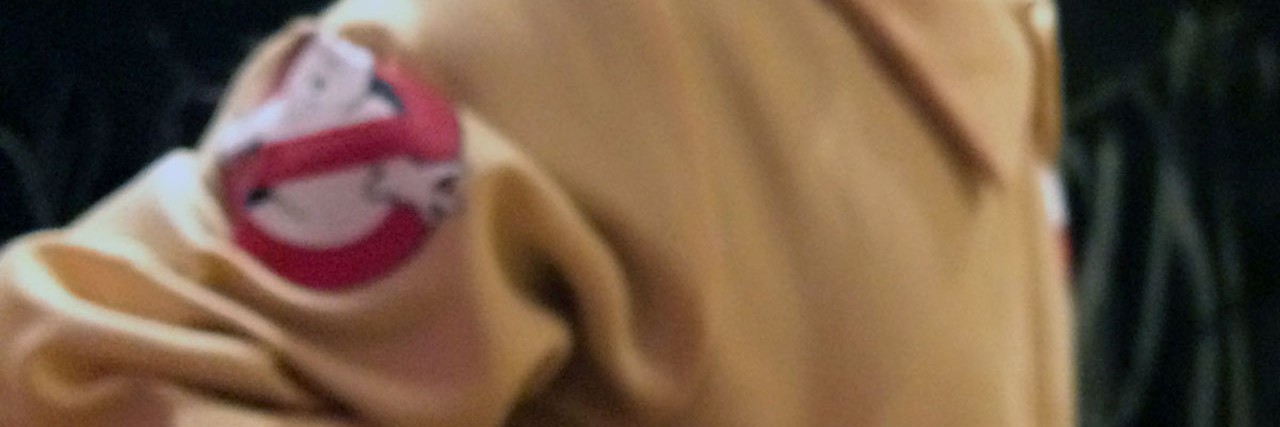What It Means to Be a Ghostbuster When You're Parenting a Child on the Spectrum
My boys’ obsession with “Ghostbusters” began one afternoon when I was trying to do yoga alone in my bedroom. The movie’s theme song came on, having somehow made its way onto my “Soothing Instrumentals” playlist. The boys stormed in. Soon the three of us were flying around with towels and blankets thrown over our heads, spooking one another and shouting out, “Who ya gonna call?”
Since then we’ve listened to the song countless times, purchased Ghostbuster action figures and even built a model of the Ecto I. Perhaps against my better judgment, I let the boys watch a snippet from the original movie: the scene when Slimer – the putrid green ghost with an obscene pink tongue – first makes its appearance. At the instant Slimer charges Dr. Venkman, ensnaring him in green goo, my older son, who’s on the autism spectrum, ran out of the room.
Although he hasn’t asked to see the movie again, my firstborn’s preoccupation with the paranormal continues. He has endless questions: What are ghosts made of? Where do they live? Are they real? He is both intrigued and unnerved by these invisible beings floating through space, haunting us and wreaking havoc on the material world, somewhat similar to the anxieties he must face every day.
I didn’t know until recently the extent that autism and anxiety can overlap. Many of behaviors exhibited by kids on the spectrum are actually rooted in anxiety. The list of my son’s anxieties is ever-expanding: the dark, crowds, unexpected noises, changes in routine, odd foods, and now, thanks to his mother, green ghosts that slime people.
Anxiety is also a big part of raising a child with a disability. My own fears often well up at night, like the ginormous Stay Puft marshmallow ghost. I am visited by apparitions from the future: my son, five years from now, trying to correctly identify the letters of the alphabet, in a self-contained classroom or kicked out of school altogether because he’s “too difficult” to manage. My son, age 20, struggling to complete high school or find a job, and unable to live independently. Then I move onto my toddler, who’s showing some signs of autism: meltdowns, food and auditory sensitivities.
I wake up from these restless nights as if I’ve been slimed. I’m liable to transfer this anxiety onto my children. There are times when I push them to perform to alleviate my anxiety, forcing my older son into more handwriting practice or insisting my younger son eat everything on his plate just to prove to me he’s not a “picky eater.” In my desperation to be reassured that they will be OK, I end up communicating to them that they are somehow not OK.
These moments call for some serious ghostbusting. For me, that means refocusing on what’s real. What’s real is my older son’s smile, his laughter, his sly sense of humor and his wicked morning breath. What’s real is that, yes, he has some significant challenges, but we’re working on them and he’s showing progress. What’s real is my younger son is a stubborn 3-year-old who throws fits and sometimes refuses to eat. He’s also sociable, confident and positively gleeful. When I get the slime out of my eyes and focus on the real flesh-and-blood children before me I see, in actuality, they’re doing just fine.
Yesterday, the kid’s “Deluxe Ghostbuster Costumes” arrived via Amazon. These full-body jump suits, complete with the Ghostbuster emblem and inflatable proton pack, promise to take their ghostbusting to a whole new level. Now the boys can suit up, turn on the theme song and zap away all those pesky ghosts that keep us up at night – while I try to do yoga.
Follow this journey on Somewhere Over the Spectrum.
We want to hear your story. Become a Mighty contributor here.

